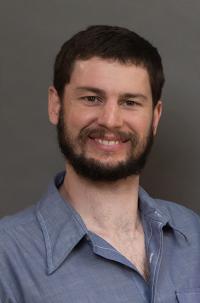The National Socio-Environmental Synthesis Center (SESYNC) is pleased to welcome Dr. Dexter Locke as a new SESYNC-LTER Postdoctoral Research Fellow. Dexter is an Urban Ecologist with a Ph.D. in Geography from Clark University. Prior to Clark, he earned a Master's of Environmental Science from Yale University’s School of Forestry and Environmental Studies. He also graduated Summa Cum Laude from the Rubenstein School of Environment and Natural Resources at the University of Vermont with a Bachelor of Science in Natural Resource Planning, with minors in Economics as well as Forestry. Get to know our newest researcher:
Name: Dexter H. Locke
Ph.D.: Geography
Hometown: Santa Monica, California
SESYNC Project: "The Relationships among Social Order, Social Cohesion, Neighborhood Desirability, and the Urban Environment: a multi-scale, spatial comparison of socio-environmental data from the Baltimore Ecosystem Study and Central Arizona-Phoenix LTERs"

How would you describe your primary field of study?
Prior to SESYNC I would describe my research as urban and community forestry, which is a blend of cities, trees, and people.
What are the broad questions you are interested in studying?
What are the relationships among social cohesion and environmental behaviors that affect neighborhood desirability, social order (i.e. crime), watershed quality, and vegetation structure?
What inspired you to choose this field of study?
The planet is urbanizing, and currently more than half of the world’s population lives in cities. Many global environmental problems express themselves at the neighborhood scale. Residents' knowledge, perceptions, and behaviors are both a cause of and a consequence of many mounting environmental problems.
Can you briefly describe your proposed SESYNC postdoctoral project?
There are two urban Long-term Ecological Research (LTER) sites: the Baltimore Ecosystem Study (BES) and Central Arizona-Phoenix (CAP). Both conducted repeated cross-sectional telephone surveys of residents about their neighborhoods. These surveys benefit from being geo-located, meaning we know where the residents live. We therefore also know about their neighborhoods through the magic of geographic information systems, government datasets like the census, and aerial imagery from which we can derive tree canopy cover. By combining datasets about residents' neighborhoods and their perceptions of their neighborhoods, we can better understand the decision making of residents. This is important because millions of people mow, irrigate, and fertilize their lawns, and these actions have continental-scale environmental consequences. Likewise, when communities plant trees together it has a lasting impact on their neighborhoods by mitigating the urban heat island effect and reducing flooding. These community-based decisions help residents form relationships and solve problems together.
Why is SESYNC the right place to undertake this research?
SESYNC fosters the diverse interdisciplinary perspectives that are critically important for team-based, actionable science. This project will require a great deal of computational resources and cyberinfrastructure for data synthesis, and SESYNC provides support for data-intensive analyses. Finally, I’m looking forward to working with the communications group, who can greatly extend the impact of this type of research.
What are you reading right now?
The Geography of Nowhere: The Rise And Decline of America's Man-Made Landscape, by James Howard Kunstler